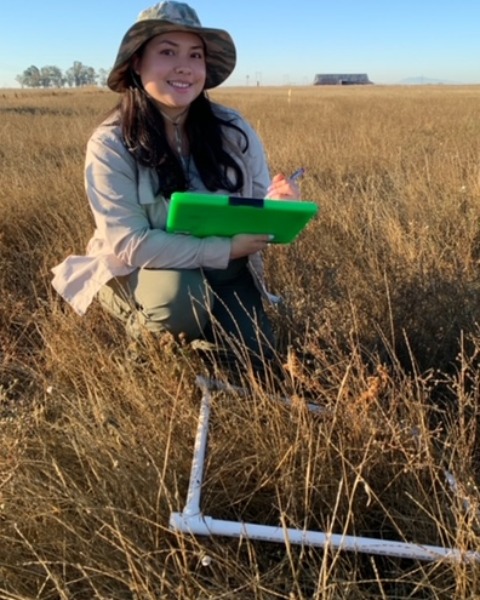Back
Latebreaking Poster
Session: Ecosystem Management (Latebreaking)
LB 16-145 - Integrated Pest Management (IPM) to control invasive plant species in a vernal pool-grassland complex
Thursday, August 10, 2023
5:00 PM - 6:30 PM PDT
Location: ESA Exhibit Hall

Jasmine Rios
Masters Student
CSU, Sacramento, California, United States- JK
Jamie M. Kneitel
Biological Sciences Department Chair
CSU, Sacramento
Sacramento, California, United States
Presenting Author(s)
Coauthor(s)
Integrated pest management (IPM) focuses on sustainable land management practices to control and prevent invasive species. Invasive plants are pests because they cause substantial environmental and economic impacts that threaten ecosystems by reducing native plant diversity, richness, and overall landscape heterogeneity. Using a combination of different IPM approaches, can target invasive plants at different phenological growth stages, while preventing resistance/tolerance of any single approach. Grazing, herbicide, and mowing are common approaches, each of which have their own caveats when used alone. One major weakness of grazing is that target weeds are only palatable during early growth stages, and become unpalatable once the plant matures. The use of herbicide has been successful in reducing invasive cover, but reliance/overuse has resulted in resistant weeds and adverse environmental impacts. Mowing alone often requires repeated treatments to yield desired results, which can be time and labor intensive. These management approaches alone cannot effectively control invasive plants, or sustain native plant communities. At present, grazing is the only weed management tool being used in the vernal pool-grassland complex at the Yolo Bypass Wildlife Area. I will examine the efficacy of combining three common IPM approaches to manage invasive plants at this site. I hypothesize that using a combination of grazing, herbicide, and mowing will have additive effects on the reduction of invasive plant cover and promotion of native plant cover, diversity, and richness, compared to grazing and control treatments. Ten treatment blocks are randomly distributed within 1-ha of the site and consist of 5 treatment plots, totaling 50 experimental plots. Treatments are randomly assigned and consist of (1)control, (2)grazing, (3)grazing + herbicide, (4)grazing + mowing, and (5)grazing + herbicide + mowing. Grazing is conducted annually from October-December. Control plots are fenced off to exclude grazing. Preliminary grazing results show a significant decrease in invasive cover, and an increase in native cover, diversity, and richness compared to control plots. Herbicide was applied in the early spring using the grass-selective herbicide Clethodim. Combined herbicide and grazing treatments resulted in significantly lower invasive cover than grazing alone treatments. Mowing will be applied in the late-spring/early-summer, to target invasives as they begin to flower to prevent seed production/dispersal. My project results will provide knowledge to develop effective land management plans and provide solutions for invasive plant impacts. This study emphasizes the importance of adaptive management and evaluation of treatments to best fit the needs of the landscape.
